CAT-ALYZING CHANGE:
A Tale of Using Community Health Equity Survey (CHES) Data to Inform Action
Think about who is part of the team and how we can collaborate. What can we do to make it easier for everyone to join in? How can we share power? How can we make sure everyone benefits from the relationship? Working together with the community and including many perspectives makes our work stronger. "Community" can mean a lot of things- from individual residents to community-based organizations. It is helpful to have a shared understanding of what is meant by "community" AND the extent/depth of collaboration.
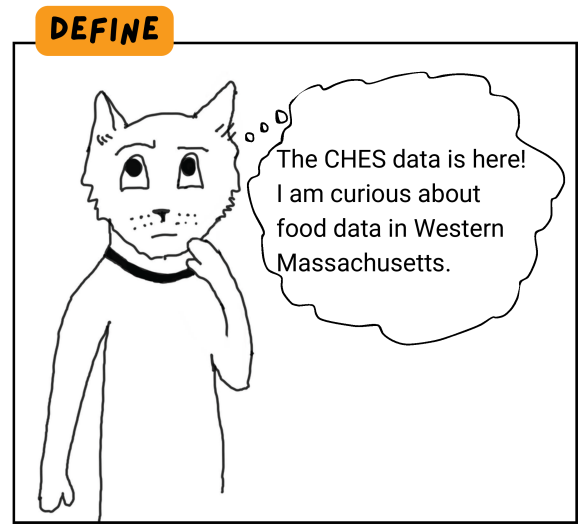
CHES gathers info on many topics including how COVID-19 affected people, where they get their news, education, access to basic needs, access to healthcare, employment, mental health, and more.
The Data to Action process can start in different places. Sometimes, it is the availability of a new data set that prompts you to explore and identify a focus. Other times, you may start out with an issue raised by the community and then seek information to better understand it.
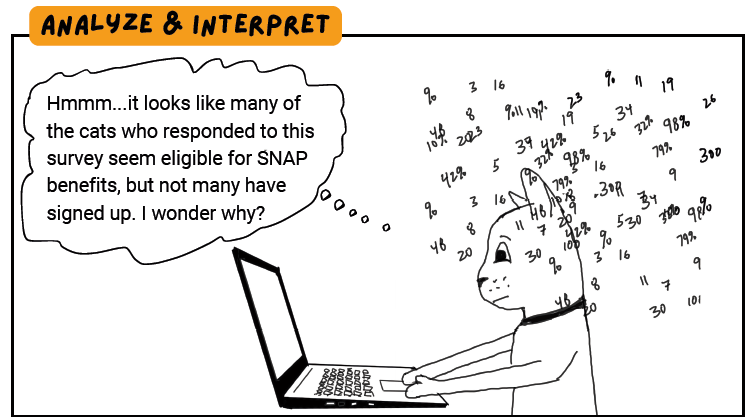
Be curious about where your information comes from. Consider who is included in the data, how it was collected, and who is left out.
The survey was designed to reach MA residents, especially communities who are often left out of traditional research. To do this, MDPH partnered with community-based organizations that had existing relationships with these populations. Because of this, we cannot assume the data reflects everyone. This is even more true when you look at the data at a smaller geography (e.g. town vs. statewide). In times like these, it is helpful to "triangulate” data. This means looking at multiple information sources to get a more complete picture of the situation instead of relying on just one.

When choosing what to do, first think about things that are already happening in the community that we can build on. Also, think about how easy it would be to do each thing and if it would be a good way to make a difference.
Though not pictured here, the cat decided to “convene”, or bring together, groups in the community. When we work together, we can share ideas, skills, and resources. Through collaboration, we can accomplish things we couldn’t do alone and have a larger impact. Sometimes a coalition, or group of organizations/ community interested in a common goal, defines the focus. Other times you bring folks in after the topic has been determined. The degree to which the community is involved is often a budgetary factor.
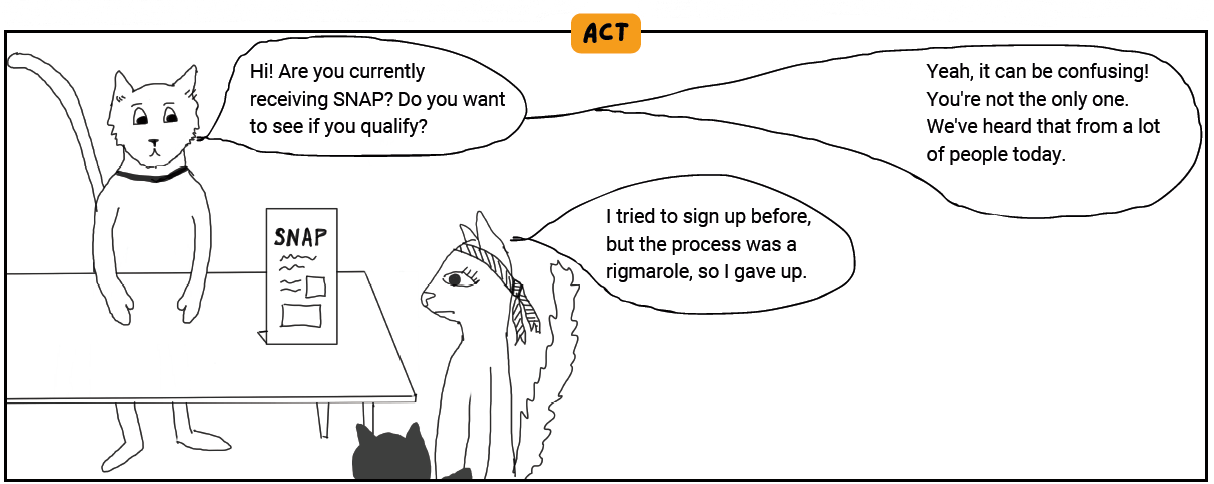
Sometimes "taking action" means collecting more information. Other times, it might mean asking for a new rule/policy or changing how things are done. It doesn't always happen in a straight line. You may go back and forth between the 'Data and Action' steps.
Our own lived experiences inform the meaning we make from data, and this is only one piece of the puzzle. People who are most impacted often hold invaluable ideas and solutions
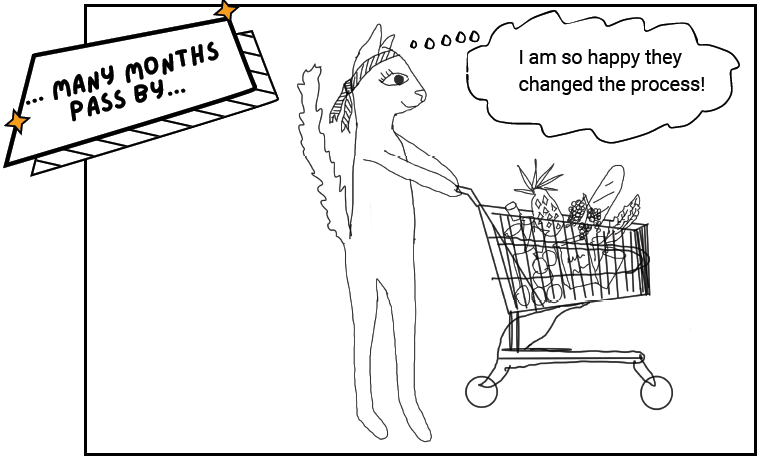
Changing a policy or system can take time. However small, all progress along the way should be celebrated. Celebrating small actions or victories can help motivate a team to continue the work. This comic does not capture all the hard work and advocacy that improved SNAP access for the headband-wearing cat. What do you think the cat coalition did to change the process?
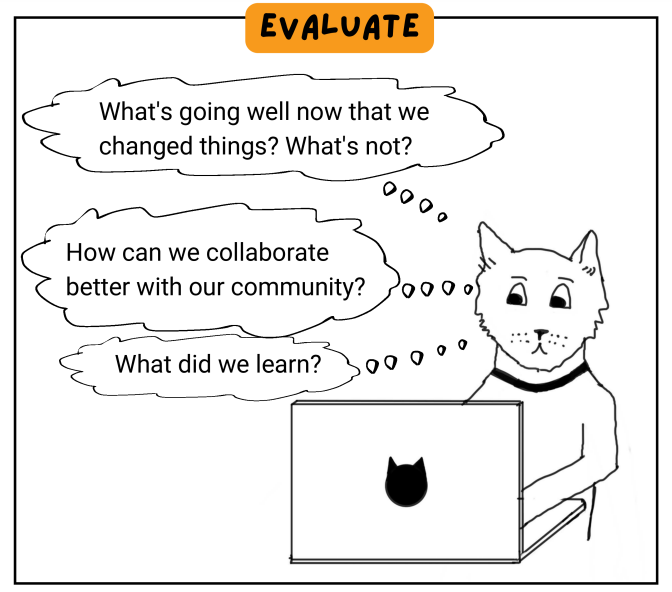
Evaluation helps us see how much we've done and find things we can do better. An ongoing evaluation process helps make sure our actions are flexible and change as we get new information.
- Learn more about CHEI
- Learn more about Data and Action Support
- Download a PDF of this comic (please note that the pdf has less commentary than the webpage)
- Data and Action: A Guide for Using Data to Support and Drive Action

